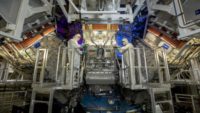The California Energy Commission awarded on Dec. 14 the first grant under its long-duration energy storage program to battery innovator Form Energy to demonstrate energy storage that is not based on lithium-ion technology and can continuously discharge to the grid for 100 hours.
The agency said the firm will receive a $30-million grant to build the 5-MW/500-MW-per-hour iron-air battery facility at a Pacific Gas and Electric Co. substation in Mendocino County—which it said will be the state's largest long-duration energy storage project and its first using the lower-cost technology when operational at the end of 2025.
The facility size, project cost and status of its design firm and construction contractor selections were not provided.
The commission said the program is set to invest up to $330 million in demonstration of non-lithium-ion technologies across the state to create a diverse portfolio of energy storage technologies. It also awarded this month a total of about $64 million in funding for a 60-MW renewable backup power microgrid project in San Diego County and a 20-MW microgrid and long-duration energy storage project in Tehama County, both to benefit Native American tribes.
A multiday battery system is transformational for California’s energy mix and will help harness excess renewable energy as the state moves toward a 100% clean electricity goal by 2045, said commission chairman David Hochschild. The state estimates it will need more than 48 GW of battery storage, 4 GW of that is long duration, to meet the goal.
Form Energy’s technology is referred to as "reversible rusting," the firm said. Battery cells contain iron and air electrodes and are filled with a water-based, nonflammable electrolyte solution. When discharging, the battery takes in oxygen from the air and converts pellets of iron to rust, with an electrical current then converting rust back to iron and the battery releasing oxygen when charging, it noted.
California is projected to have up to 8,600 MW of battery storage in use by year end that operates at the current industry standard of four to six hours of discharge.
Form Energy also recently said it gained $12 million in funding from New York to develop a 10 MW/1,000 MWh iron-air battery storage project, with location still to be determined, a company spokeswoman said.. The state, which said it has a goal to install 3,000 MW of energy storage by 2030, also awarded smaller grants to three other developers.
Utility companies Dominion Energy and Xcel are also planning pilot projects to test Form Energy’s iron-air battery technology, the firms said.
Form Energy’s first battery cell manufacturing plant in West Virginia, a $760-million project with 500-MW annual capacity, will begin operation in 2024.
U.S. energy storage capacity hit a new high in the third quarter, with 7,322 MWh becoming operational, says the American Clean Power Association and energy consultant Wood Mackenzie in their latest US Energy Storage Monitor report released Dec. 13. “This industry will serve as the backbone of our modern grid,” said group Chief Policy Officer Frank Macchiarola.
The analysis said U.S. grid-scale installations increased 27% since the previous quarter, breaking records both for megawatts and megawatt-hours installed.
Battery capacity addition is also set for a new record in 2024, with 8.6 GW expected, says Shayne Willette, S&P Global senior research analyst. "As renewables increasingly penetrate the grid and emissions standards become more stringent, the role batteries play in enhancing grid reliability is being further emphasized." Investment is further enhanced by the 2022 Inflation Reduction Act, which has made standalone battery systems eligible for federal tax credits, he adds, with capital costs continuing to decline.
Texas and California will account for 5 GW of 2024 battery additions in 2024, split between the two states, S&P Global says.







Post a comment to this article
Report Abusive Comment